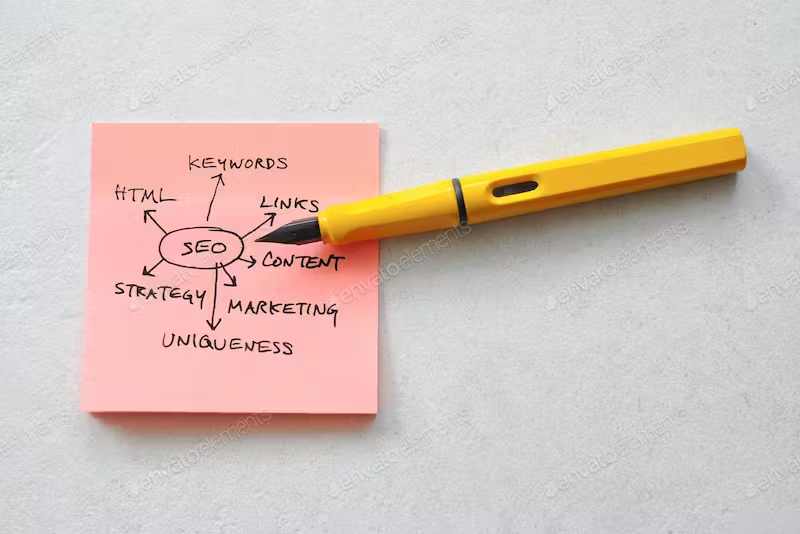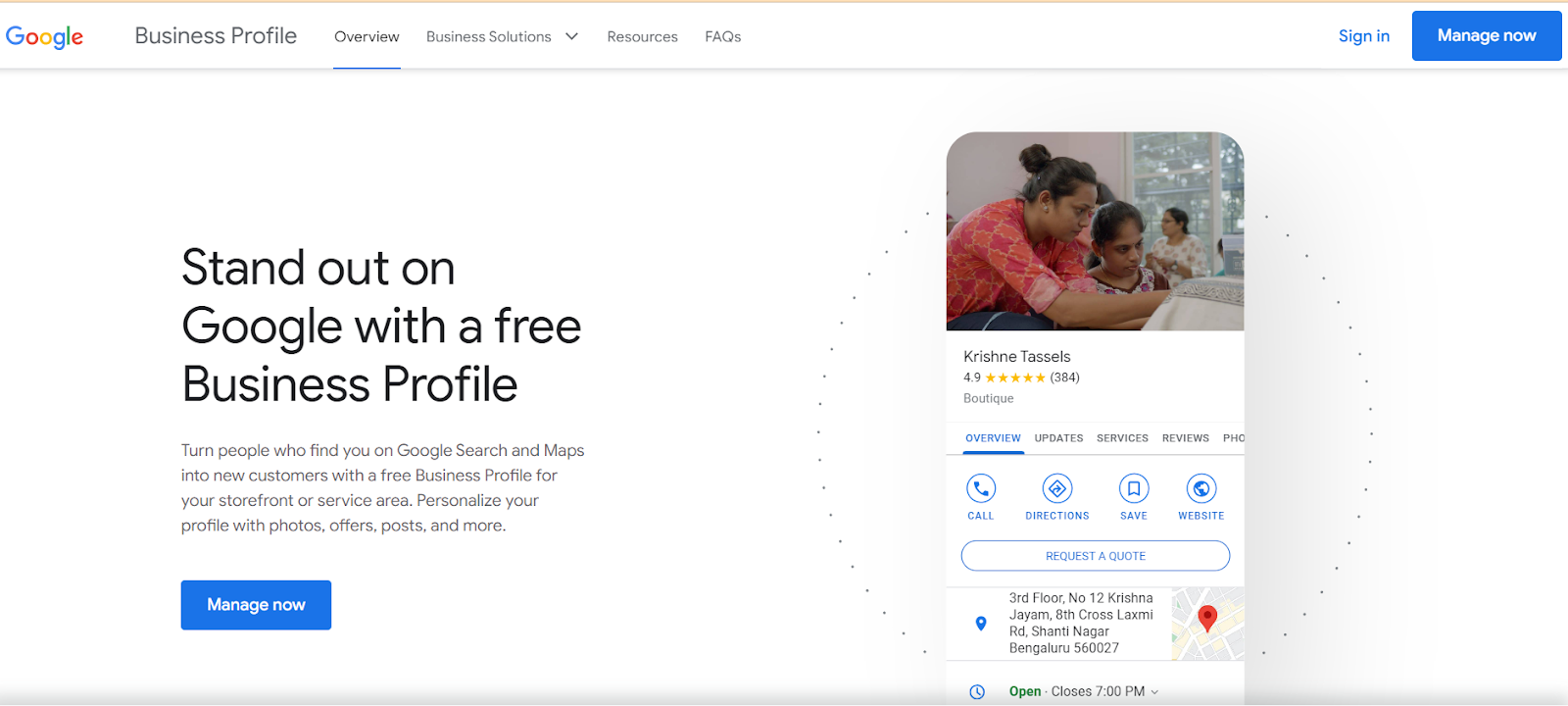As a business owner, are you still struggling to get your business noticed on Google? We understand that attracting new customers and not being in the top Google search results is frustrating and would even cost your business. But worry not. Local SEO is there for you, and so is this blog. Focus on local searches using local SEO practices, and you are good to go!
Read ahead to find the best local SEO services to help you dominate your local search.
What is Local SEO? How does it Work?
Local SEO is a search engine optimization (SEO) system that helps businesses grasp attention in local search results. In simple terms, Local SEO helps you gain visibility in a specific geographical area.
How?
Google uses its local search algorithms to take its user’s location when the user searches for a local keyword. This occurs even if the searcher does not include “near me” during the search on Google.
For Instance, Let’s say you are at work and want to get food delivered to your office for lunch. You search on Google for “Pizza places,” “Fast-food joints” and similar terms related to your preference.
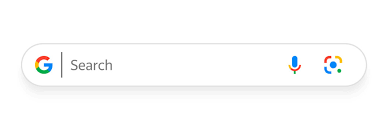
Google will give all the results in its local SERPs (Search engine result pages) for food places near you, even though you did not use “near me” during your search. Moreover, it provides you with different search results if you search the same from a different location.
So, this is how Local SEO works. But let’s understand how important it is for your business.
Why is Local SEO Crucial for Your Business?
Without a second thought, we rely on Google to search for solutions. (“Google is the new God”) Want a doctor? We Google it. Best restaurant near me? We Google it. So, for your business to be locally visible, you need local SEO.
Say a person searches for a car dealership store, and you own one. However, you are not strong with your Local SEO practices. Google diverts this potential customer to your competitor, who has used local SEO tactics to rank on Google’s SERPs.
This is why local SEO is important. As a matter of fact,
- Around 46% of searches on Google are local.
- According to the study by Uberall, nearly 70% of buyers said that more than half of their search activity has a local intent.
- Based on the survey results by BrightLocal, in 2022, 98% of shoppers used the internet to find out about local businesses.
- The 2023 BrightLocal consumer review report found that 87% of customers read online reviews for local businesses.
So, to enhance online visibility and attract more local customers, you need local SEO. Let’s look at examples of some restaurants, cafes or fast-food franchises that use local SEO for their businesses.
Examples of Restaurant Franchises Using Local SEO

Let’s look at two well-known fast food and restaurant chains in the US. Both Starbucks and SONIC have several franchises in the US. However, they use Local SEO to target people in specific geographical areas.
Let’s see how.
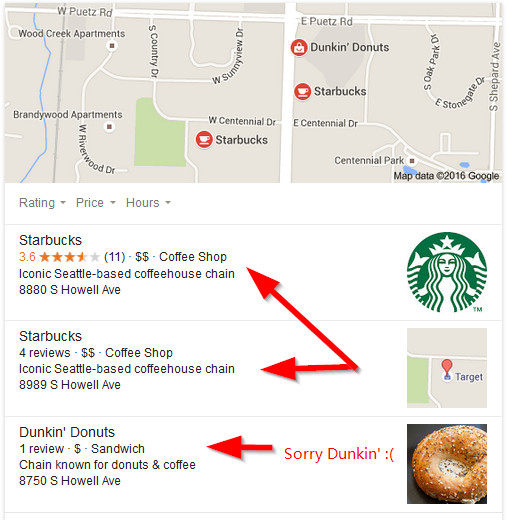
When it comes to Starbucks, one Google search for a “coffee shop near me” is enough. There is always a Starbucks available, no matter where you are. The sole reason is its strong local SEO practice.
- Strong Landing Page: First, they have a strong local landing page. Making it easier for customers to search the nearest store in seconds on Google.
If you go to a Starbucks site and look under the store locator tab, you can easily get the store’s address, phone number and other information. Making it very convenient for a searcher.
- Customer Reviews: Second are the reviews from their customers. Reviews play a pivotal role when it comes to local search. Businesses with numerous as well as positive reviews are more likely to rank better by Google crawler.
There are two of many things that they, as a global franchise, do for local search optimization.
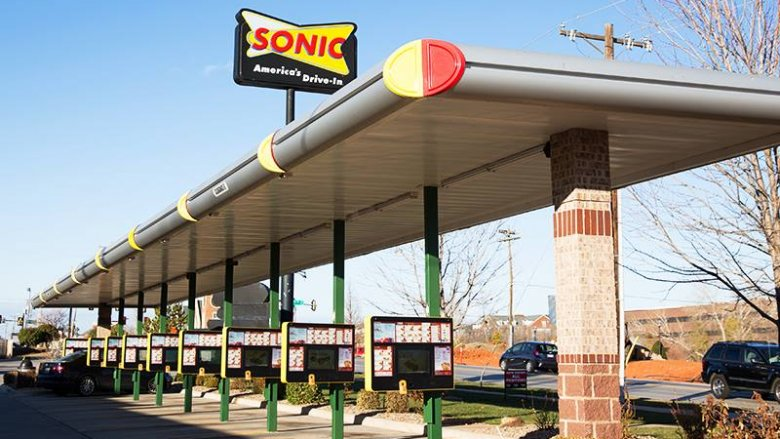
Another example is Sonic: an American drive-in burger restaurant with over 3000 locations since 1953.
How do they target their local geographical areas?
- Google My Business Profile: Each of its locations has its own Google My Business profile. Each location has individual details, such as name, address, phone number, working hours, and menu photographs.
- Social Media Engagement: The second most important local SEO practice is that they target their audience via social media. They have active social media platforms for all their locations.
They update their accounts with promotions, events and more to engage the local community. Making their Local SEO user-friendly.
Both Starbucks and SONIC use their own strategies to run their business. Both of them have their unique SEO approaches for the local as well as the global market. So, let’s see how you can use similar strategies for your businesses.
8 Ways to Dominate Local Searches
The competition between local businesses is hotter than ever. And if you are not on top of your game with Google rankings, you bet your competitors are. So, below are the eight methods you can use to dominate your local search using local SEO:
- Add Location-Based Landing Pages
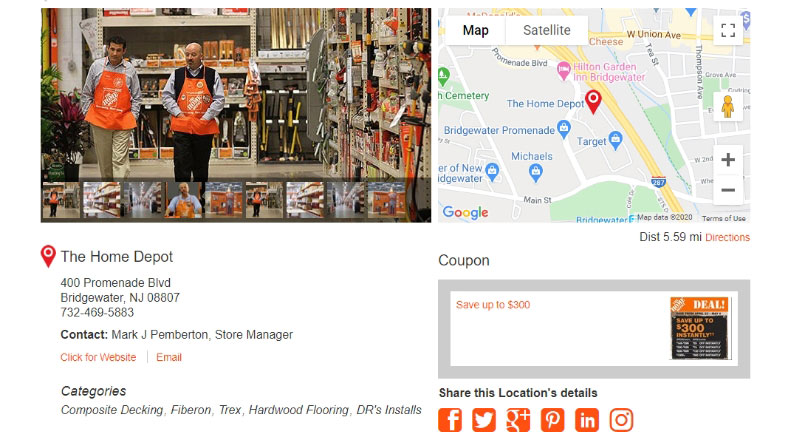
To attract and retain customers, it is important for business owners to prioritize customer experience with multiple brick-and-mortar locations. Thus, a location page will help audiences locate your store easily.
The location page can include information such as your business name, address, phone number, working hours, and testimonials. Also, bonus points to Google Maps on your location page.
Furthermore, try and include local content or offers. For instance, if you are a restaurant owner, your location page can include content that defines a specific area. You can also promote local charities and organize events.
You can also incorporate location-specific keywords. For example, “Flower shop in (city name)” or “Flower shop near me in (city name.)”
- Optimize Your Google My Business Profile (GMB).
GMB is a free platform by Google that allows you to address how your business will appear on Google search results. Google supports and verifies its content. Thus, it’s an ideal platform for local SEO to meet Google requirements.
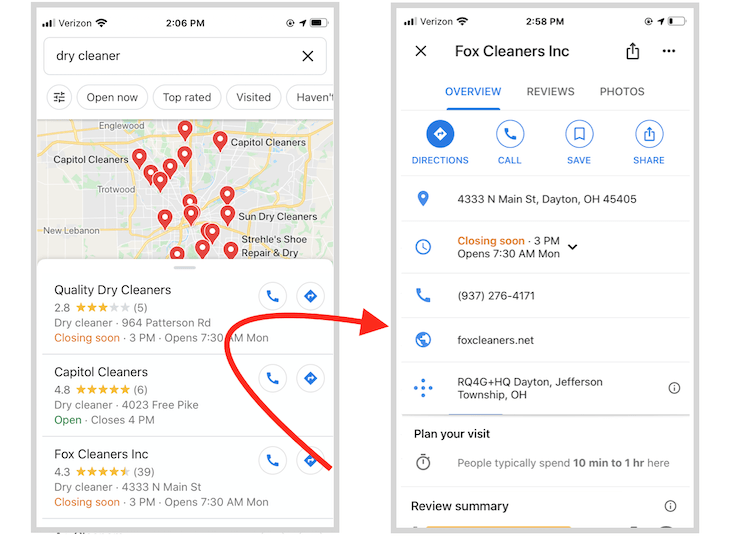
Steps to follow to optimize your GMB
- Create and verify your Google My Business Page.
- Enter and ensure your company’s name, address, and contact details are accurate.
- Add other relevant information and pictures.
- Respond to customer reviews authentically.
Reviews, contact information, photos and more help improve your customer experience and are essential for prospective customers.
How does it help your customers?
So, when a user searches for a product or service in their local area or specific location. For example, “pizza near me” or “pizza store in Tampa,” GMB-optimized businesses are likely to be featured in the top search results.
Helping your business reach a broader audience and enhancing customer engagement.
- Meta Title and Meta Description

Meta titles and descriptions are HTML tags that provide brief information about the content of a webpage. Google displays the text of these tags on its search results. Giving a “teaser of a movie” feel to the searchers.
These tags are a one-time shot to grab customer attention. If the title and description are missing or Google thinks they are not good enough, your page might not rank as you expect it to.
You also need to ensure that your titles and descriptions are under the character limit, unique and compelling. Helping you with your click-through rate.
- Online Customer Reviews
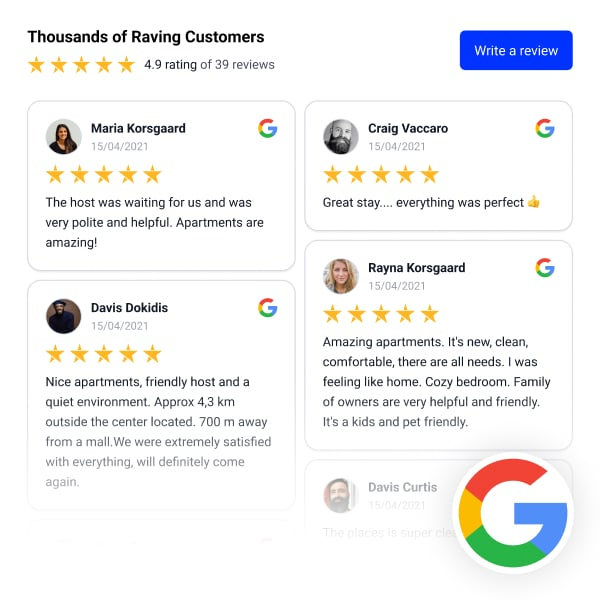
According to a survey conducted in 2019, among all the online customers in the United States, 69% of customers stated that online customer reviews were very helpful.
Online reviews are a luxury to businesses. Would you ever order food from a 2.4-star-rated restaurant? No. Because customer reviews and ratings matter. But ratings are not enough; you would want your customers to leave happy customer reviews.
Secondly, another crucial step as a business owner is to respond to those reviews. Replying to the reviews will likely incline a potential customer to visit your website or shop from your local store.
- Create Local Backlinks
Local backlinks for local businesses play a major role in local SEO. They alert the search engines that a business is relevant to a specific local area.
In simple terms, local backlinks refer to acquiring links from other websites, directories or online platforms local to your business.
You can link your business in directories, such as YellowPages, local newspapers or magazines, and collaborate with local influencers or bloggers.
How will it help the searcher?
The backlinks will provide customers with all the necessary information about your business. It will help the customers discover your business as well as connect you to the local community and other local businesses.
- Unique Social Media Content

With ever growing competition, making yourself stand out and creating content that is out of the box is very important. You can engage in various social media platforms like Facebook and Instagram.
Social media influencers rule the social media market. They play a significant role in the realm of social media. Collaborate with influences to create unique content and post on their accounts. This will attract their followers to visit your local or nearby stores.
Adding unique offers and deals that relate to the local audiences would be a cherry on top for your business.
- Internal Linking
External links work best for your website, but have you ever considered how internal linking would benefit your business? For starting, it helps boost your SEO ranking.
How else will it benefit your business? First, it helps customers navigate through your website easily. Secondly, it allows you to distribute your website pages based on how you wish to rank them.
For instance, if you offer services to your customers, you can create a separate service page and link it internally. You can also link various franchise locations of your business for the audience to navigate through.
- Conduct a Local SEO Audit
Once you have structured your local SEO, it is crucial that you perform a local SEO audit for your business. Consider it a systematic health checkup – an audit to pinpoint areas of concern and find solutions to those problems.
You can check for the following points to improve your visibility in a specific local area.
- Keyword Search: Did you identify your primary and secondary keywords for your specific location?
- GMP: Is your information accurate during your Google My Business SERP?
- Local SEO: Is your site crawlable and accommodates SEO elements?
- Social Media Audit: How is the overall traffic? Did you engage with your audience via your social media platforms?
- Local Reviews: Did you respond to customer reviews? How are you handling negative responses?
- Link Audit: Do you have backlinks? How are you connected with the local community or organizations?
The above-mentioned points are some of the many crucial questions you can ask yourself when performing a local SEO audit.
For today’s consumers or shoppers, doing a Google search has become second nature. People use Google to search for local businesses, services and products. Easy to find Google search results, converts into shop visits and higher revenue.
Now that you know how to dominate your local search, let’s explore local SEO content and its types.
Local SEO Content and Its Types
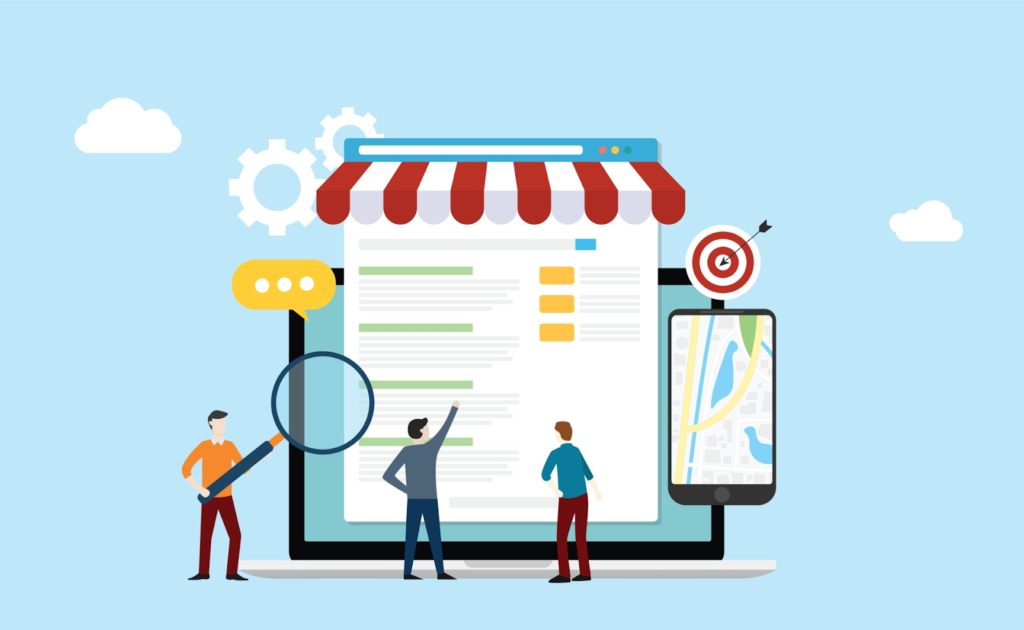
You need rich local SEO content to rank your business in search results, especially if you are a small business.
But first, what is local SEO content? Local SEO content is a search engine optimization technique that increases the visibility of local businesses on Google.
Furthermore, it consists of text, images and other content that meets the requirements of local searchers. You must ensure that you target a local audience of a specific geographical area or zip code with your content.
What are the Types of Local SEO Content?
Local SEO content helps businesses create, optimize and publish local website content. With only one goal in mind – to rank “locally” or in a certain “geographical area.”
Here are five types of local SEO content:
- Local Landing Pages:
Creating local landing pages for each location is essential for local SEO content. You can target locations on different levels, including state, metro, city, neighborhood, or suburb.
A state page will show all locations where you offer services in a specific state. Next comes regional levels and, after that, cities. City pages are very popular when targeting a smaller area. Finally, a neighborhood is when you have several locations in one particular city.
- Service-Area Pages:
Service-area pages are for businesses that offer services for their product to customers. A service-area page provides a specific location where a business offers its services. (Even if your business does not have a physical office or service department.)
For instance, if you are an HVAC company in one city, but you offer your service in other locations or cities. Create a service page providing information about the places where you offer your services.
Each service location, such as Tampa or Wethersfield, should have its own service page.
- FAQ Pages:
You can create a page with content that offers information about your business’s products and services. These pages could include “How-to” guides and FAQ’s. Shoppers requiring information about a specific product or service will find these pages helpful.
The guides can be about “how to install a product” or “how to use a product,” whereas FAQs can include answers to common questions. Adding local factors to these pages can help you rank better (locally).
Here’s an example of a FAQ page for the University of South Florida.
- Testimonial or Third-Party Review Pages
Another important type of Local SEO content is testimonials of local customers about your brand or business. It is a human tendency to trust testimonials. So, try creating testimonial pages for different locations.
Another aspect of testimonials is third-party reviews. They both have major differences. Most importantly, testimonials can be easily tampered with or manipulated. Adding third-party reviews to pages possibly builds more credibility.
Here’s an example of a shipping company.
- Blog Pages
These days, businesses include blog posts or articles for their websites. The blog section is a sort of informational guide on a topic related to the brand, its products or the services that it offers.
The blog posts or articles can include any topic, with keywords, competitor analysis and best SEO practices.
Here’s an example of a blog post page.
So, successfully creating local content by following these local SEO practices, no one can stop you from generating more organic traffic.
What is the Difference Between National SEO and Local SEO?
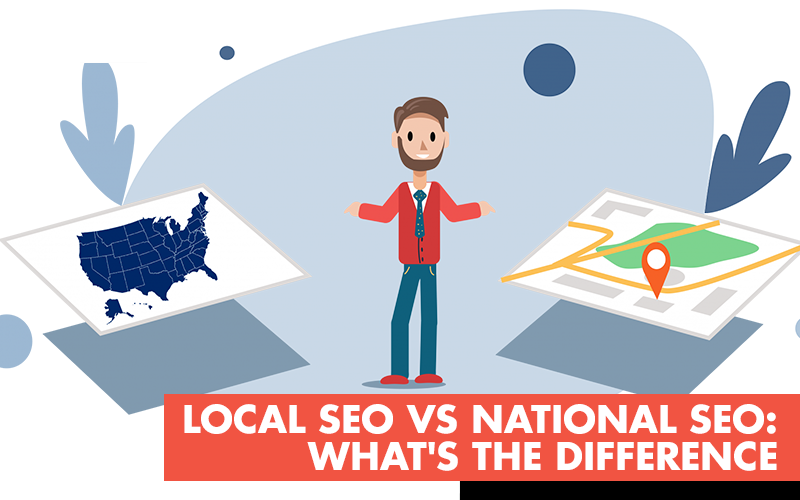
Throughout the blog, we understood how local SEO can help you dominate your local search. To achieve top ranking on Google SERPs, your business might need both (local and national) SEO strategies.
Despite their similarities, there are notable differences between them. Local SEO depends on the customers who are near your business or in the same geographical area. On the other hand, national SEO focuses on targeting traffic nationally.
Let’s look at the difference in a tabular format:
| Aspect | Local SEO | National SEO |
| Local SEO is for local businesses and stores. | National SEO is for large organizations, online stores and franchises nationally. | |
| Target Audience | Targets only local customers. | Targets the maximum number of customers on a national level. |
| Geographical Area | Specific geographical areas, like cities | Nationwide ( Broader geographical area) |
| Target Keyword | Local-specific keywords, for example, hospital near me | Broader keyword focus according to the industry or niche. |
| Business Listings | Crucial to optimize Google My Business | Focuses less on local listing |
| Competition | The target audience is at the city level, thus less competition. | Exponentially more competitors as the target audience is larger. |
| Visibility | Local rankings and visibility in specific areas | National ranking and online presence on a larger scale |
| SEO Tools | BrightLocal and Whitespark | Moz and SEMrush |
There is no universal law when it comes to SEO as it solely depends on individual businesses. Which type of SEO is right for your brand: national or local? Think about your overall goal, target audience and budget.
Hopefully, this comparison helped you understand which will benefit your business the most.
In a Nutshell
So, be it a hospital nearby, a barber shop or a grocery store, you now know the importance of local SEO and how it can help you dominate your business’ local search. It is a vital strategy to stay ahead of the competition.
Focus on a wider range of local customers and establish a stronger presence in your community. And if you need help, get in touch with us today. We can help grow your business and reach new heights.

